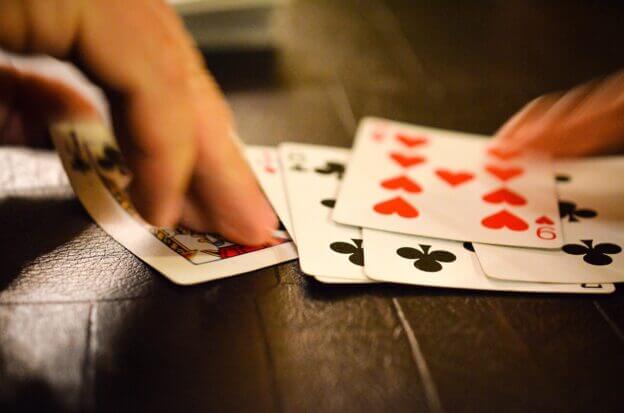A 3-bet is another name for a re-raise, and it relates to the number of bets in a single betting round where:
- An initial bet (or big blind) is made
- A player raises on top of that bet
- A third bet/raise is made, also called a 3-bet
One of the biggest mistakes players make when it comes to 3-betting preflop is overvaluing their hands. That’s why we put together this article with the following tips:
When you are 3-betting, you are very often going to end up heads up, especially when one player open raises and there are no cold callers in between.
The SPR is going to be much lower than in a single raised pot, therefore the stacks are going in very often. This also means that there will be fewer streets played. With 100bb stack sizes, a heads up 3-bet pot will have an SPR around 3.5, or just under two pot-sized bets left.
When you call preflop, you get into multiway pots more often, especially when you are calling from an early position. Usually, someone will flop a piece big enough to put out a bet, and you’ll need a pretty high threshold to continue.
Even if your hand is not doing amazingly well in a 3-bet pot you might still want to consider 3-betting because it’s good enough to play but it does even worse in a multiway pot.
1. Preflop 3-Bet Mistakes to Avoid
There are so many different fields where we can improve when it comes to PLO strategy, but we can’t improve at all the spots at the same time. For that reason, you should focus on the spots that happen often and have the biggest impact on your win rate.
How these mistakes can affect you:
- Especially in low stack-to-pot scenarios, 3-bet and 4-bet mistakes can cost you all your stack.
- Losing a high amount of chips can affect your motivation and could put you on tilt.
- Mistakes in this area will have a huge impact on your bankroll in the long run.
Single-Suited Rundown Hands
Single-suited rundown hands don’t hold an equity advantage against almost any range that is typically raising before the flop.
They also have a very high risk of being dominated, both in a 3-bet pot as well as in a potentially 4-bet pot by better suits, as well as higher rundowns. In these scenarios domination can play a huge role.
Double-Suited Trash Hands
Double-suited trash hands are generally overvalued by players, these hands often look so pretty and playable, especially if you’re switching from NLHE to PLO, but many of them simply aren’t great to play with.
Odds are these hands will generally come with low suits, which will often be at heavy risk of being dominated by higher suits.
Secondly, they may be very disconnected. Even though the hand is double-suited, we don’t want to be playing disconnected combinations in 3- or 4-bet pots. You won’t flop as smooth, and when you do, you will often lose due to being dominated by other players with better combinations.
High-Paired Hands
In general, you want to be very careful with Kings, Queens and Jacks, especially if you don’t block Aces with your other cards. Not having an Ace in your hand doesn’t block opponents’ 4-betting range and therefore the chance of being 4-bet is higher.
It makes sense to utilize many of the Kings and Queens that have decent connectivity as a 3-bet. If there is low connectivity, calling a 4-bet is entirely out of the question, as your opponents’ 4-betting range will almost always have Aces, especially if you don’t have an Ace in your hand.
2. Hands You Should Be 3-Betting Preflop
If you would ever choose to 3-bet before the flop, you want to play stronger hands. Hands with better connectivity and domination potential will have a better performance.
You want to be able to stack-off on as many flops as possible. This can be done with high suits and high rundown hands primarily. Think about beating, or at least blocking 4-betting ranges.
Look for a smooth flop distribution, a hand that will very often flop a piece of the board.
Aim high – choose combinations that will be at the top end of the flop, mid-top pairs, and the upper part of flushes/straights.
Questions to ask yourself before 3-betting.
- Am I overvaluing my hand?
- What is my opponent’s open raising range?
- Could my hand get dominated by their range?
- What happens if I get 4-bet?
Think about your opponents’ open raising ranges.
Are they tight and well-defined ranges? Or are they more aggressive with a wider range? Are they raising without blockers or making the mistakes we talk about here?






























